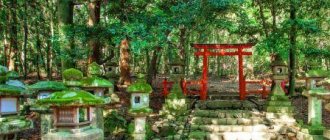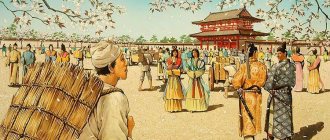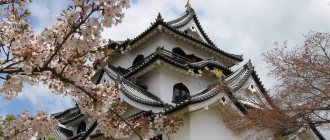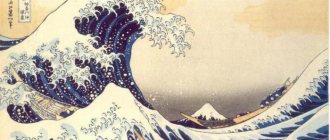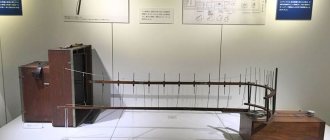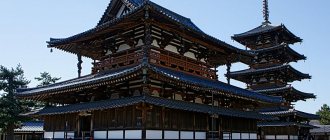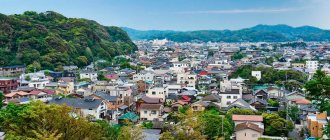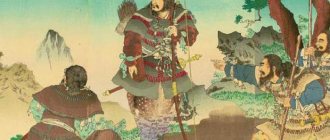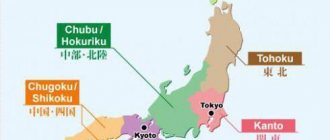Formation of Japanese civilization
Ancient Japanese civilization did not have a significant impact on the ancient and medieval culture of other regions. Its significance for world culture lies elsewhere. Having developed a unique art, literature, and worldview based on the most heterogeneous and multi-stage elements, Japan was able to prove that its cultural values have sufficient potential both in time and in space, even if they remained unknown to contemporaries in other countries due to the island position of the country . The task of the historian of Japanese antiquity is, in particular, to understand how the foundations of what we now call Japanese culture were laid, which, after a centuries-long period of accumulation of the cultural heritage of other countries, is now making an ever-increasing contribution to the development of universal human culture.
Main periods in the history of ancient Japanese civilization
- Paleolithic (40,000-13,000 years ago). There are few Paleolithic monuments, most of which were discovered after the war.
- Neolithic - Jomon culture (13,000 BC - 3rd century BC). The majority of the population lives in the northeastern part of the island of Honshu. The Jomon culture (named after a type of pottery with rope designs) spread from Hokkaido to Ryukyu.
- Chalcolithic - Yayoi culture (3rd century BC - 3rd century AD). Named after the type of pottery found at Yayoi. There is a major migration from the Korean Peninsula of groups of the Altai language group, which brought with them the experience of rice cultivation, sericulture, and technology for the production of bronze and iron. Assimilation of the local Austronesian population occurs, leading to the emergence of the proto-Japanese.
- Kurgan period - Kofun Jidai (III-VI centuries). It got its name from the large number of mound-type funeral structures. The formation of a homogeneous state—Yamato—is taking place.
- Asuka period (552-646). It received its name from the location of the residence of the Yamato kings in the Asuka region (Central Japan). This period is characterized by the formation of Buddhism and the strengthening of the state.
- Early Nara (646-710). At this stage, there is massive borrowing from China - writing, bureaucratic structures, theories and management practices. A period of great reform begins to transform Yamato into a "civilized" state along the Chinese model: the creation of the first legal codes, a system of state land ownership and an allotment system of land tenure.
- Nara (710-794). It received its name from the location of the first permanent capital of Japan - the city of Nara. The name of the country changes to "Nihon" ("where the sun rises"). The first written monuments of their own appeared - the mythological chronicles “Kojiki” and “Nihongi”. The internal struggle between the serving nobility, immigrants from China and Korea, and the local aristocracy is intensifying, which leads to the weakening of Buddhism and the strengthening of Shintoism.
Settlement of the Japanese Islands
Clay figurines. Jomon period. VIII-I millennium BC
Japanese civilization is young. The people who created it are also young. It was formed as a result of complex and multi-temporal ethnic fusions of settlers who overcame the water barrier separating the Japanese islands from the mainland. The earliest inhabitants of Japan were, in all likelihood, proto-Ainu tribes, as well as tribes of Malay-Polynesian origin. In the middle of the 1st millennium BC. e. from the southern part of the Korean Peninsula there is an intensive migration of proto-Japanese Wa , who managed to significantly assimilate the population of southern Japan (the Japanese language, according to the latest research by S. A. Starostin, shows the greatest kinship with Korean).
And although in that era all the tribes inhabiting the territory of Japan were at the level of the primitive communal system, even then, probably, one of the leading stereotypes of the Japanese worldview was laid down, which can be seen throughout the history of this country - the ability to assimilate skills and knowledge, received as a result of contacts with other peoples. It was after assimilation with local tribes at the turn of the IV-III centuries. BC. Cultivation of irrigated rice and metal processing begins.
Yayoi era
The period lasting six centuries (until the 3rd century AD) is called “Yayoi” in Japanese historiography (after the quarter in Tokyo where the remains of this culture were first discovered). The Yayoi culture is characterized by the creation of stable communities whose basis of life was irrigated agriculture. Since bronze and iron penetrated Japan almost simultaneously, bronze was used mainly for the manufacture of religious objects: ritual mirrors, swords, bells, and iron was used for the production of tools.
↑ Architecture
The formation and development of architecture was primarily influenced by Buddhism, which entered the country from China. Palaces, temples, and monasteries were built primarily in the Chinese style, which for a long time was initially formed in China itself and neighboring Korea.
Of course, for the complete introduction of Buddhism into the country, some material complex of this religion was also necessary, so the first images of Buddha and bodhisattvas began to appear.
The architecture of those times combined foreign notes, organically mixed with local culture. Temples and palaces are always located in the middle of a beautiful garden. The painting of these buildings was quite laconic, but bright.
To some extent, the style and features of Japanese ancient architecture were influenced by local nature. Capricious, but beautiful, even then she could crush and break, which was reflected in the creations of local architects. There are no majestic ancient buildings that would inspire admiration with their size or complexity.
The buildings were simple and clear, there was nothing superfluous in them, but they were distinguished by the elegance of their lines. The main building material was wood. Houses were built on a frame that prevented moisture from entering the house due to an air cushion between the ground and the floor. Houses, temples, palaces always had columns on which the house “rested” during seismic activity.
Instead of the usual windows, there were holes with thin fabric or canvas stretched across them, letting soft light into the house. All walls, except load-bearing ones, could be moved apart, removed, or replaced. This made it possible to change the layout. There could be one, two or more rooms, depending on the number needed and the space available.
The roof was always wide and strong, to protect the house from moisture, rain, wind and cold, as well as the scorching summer sun.
↑ Painting
Painting in the ancient country appeared quite late, already in the 11th-12th centuries. We are talking about the Yamato-e school of painting. Ceramic vessels, screens, kimonos, scrolls, books, fans, and palace walls were used as canvas. Painters often depicted illustrations of ancient myths, tales, and novels. At the same time, it was not the action itself that was depicted, but the mood of the characters.
The masters drew inspiration from nature itself, which permeated the art of that time. Writing Like other types of arts, science and, most importantly, writing were originally borrowed from the Chinese and Koreans. China had a strong influence; the Japanese sent their children here and to Korea to study.
In the 3rd century, Japan begins to borrow Chinese characters. At the same time, they were read differently, in Japanese. Over time, they were simplified and became less difficult to write. And already in the 8th century, the first Japanese written monuments appeared, written in Chinese.
